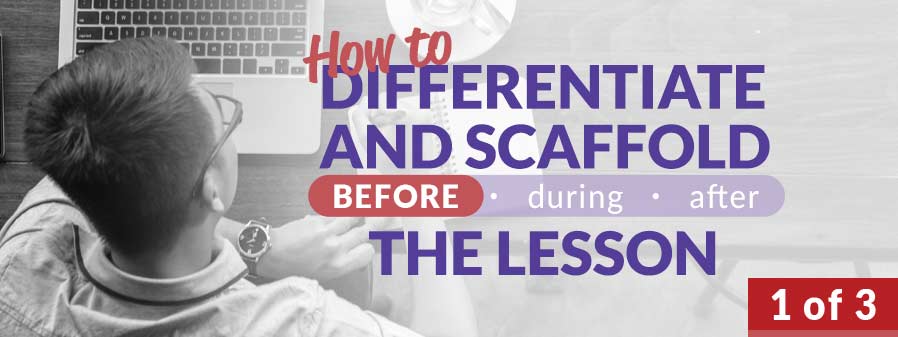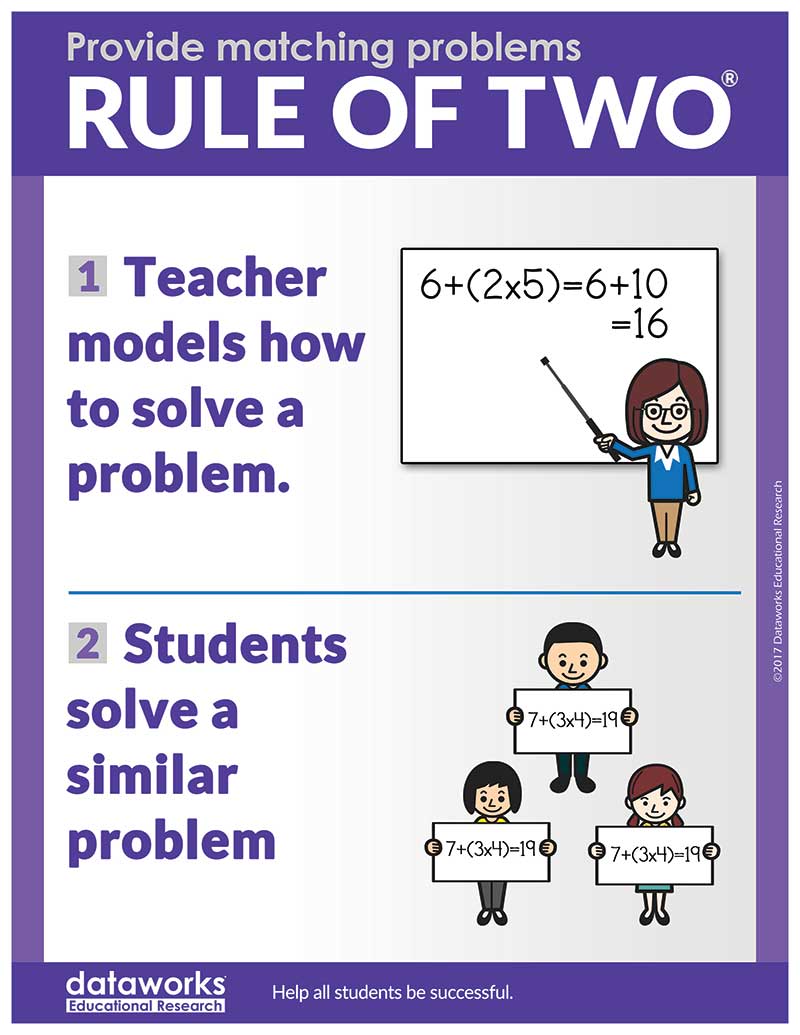
How to Differentiate and Scaffold - before teaching
Plan for success before the lesson
There are differences between differentiation and scaffolding. Differentiation refers to the idea of modifying instruction to meet a student’s individual needs and learning styles. Scaffolding refers to modifications you make while designing and teaching lessons that allow all students to be successful in learning the same content.
Differentiation is often directed at individual students while scaffolding is done for the entire class. For example, when an individual student can’t answer a Checking for Understanding question and you rephrase your question from open-ended to multiple choice, you have differentiated for that one student. When you pre-read a Learning Objective before having the entire class read chorally, you are scaffolding.
In reality, differentiation and scaffolding strategies overlap, but they have the same ultimate goal: increasing student success.
Differentiating and Scaffolding to increase student success
All educators want student success. A common goal at the lesson level is to have 80%–100% of students successful through whole class instruction. Student success can be improved by making strategic decisions before the lesson, during the lesson, and after the lesson.
Design for success before teaching
Differentiation and scaffolding start with the design of the lesson. Explicit Direct Instruction (EDI) lessons are purposefully crafted to generate student success. The Learning Objective and Independent Practice are exactly synchronized. Each lesson contains written definitions of the concepts you are teaching. Labeled examples illustrate for the students what the concept definitions mean. Lessons include clear steps for you and your students to use during Skill Development and Guided Practice. Over the course of the lesson, you teach your students exactly what they need so they can successfully complete the matching Independent Practice.
Much of the success of EDI lessons, including 1,200 online EDI lessons at educeri.com, is due to the use of the “Rule of Two.” Each lesson provides matched pairs of problems. The first problem is for you to solve while modeling your thinking out loud so students can hear you solve it. The second problem is for the students to solve.
At DataWORKS Educational Research we have found that when students are not successful, it’s not because they can’t learn. It’s usually because of defects in the lesson itself. For example, a teacher uses a strategy such as “sounds right” during a grammar lesson instead of providing clear definitions and rules for the students to apply.
Sometimes, teachers solve problems but cannot describe in words exactly how they determined the answer. Often, a teacher provides lots of information and then tells the students to “learn it” without providing any strategies or techniques for students to use to remember or organize the information. When students are unsuccessful in these lessons, it’s not the students. It’s the lesson.
EDI and Educeri lessons are designed to prevent these problems by using clearly written definitions, labeled examples, matched problems, steps to use while solving problems, and integrated Checking for Understanding questions.
In a future blog, we’ll talk about differentiating and scaffolding during the lesson.
These strategies are based on DataWORKS’ Explicit Direct Instruction.
Explicit Direct Instruction helps all students. Download this document to learn more about our EDI Professional Development.




